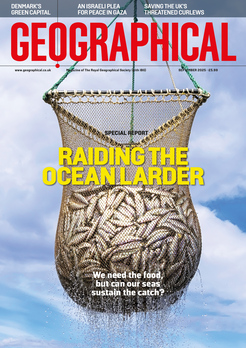

Series of devastating earthquakes struck Türkiye and Syria, killing at least 50,000, injuring 100,000 more and destroying thousands of buildings
by Victoria Heath
On 6 February 2023 – and only nine hours apart – two earthquakes struck in southern Türkiye, near the border of northern Syria. The first, a 7.8-magnitude quake, was followed by a second 7.5-magnitude earthquake located around 59 miles (95 kilometres) to the southwest. Hundreds of aftershocks were also recorded after the quakes, with several having a magnitude of larger than 6.0.
The earthquake took only about 30 seconds to reach a maximum slip of around 3m, resulting in intense shaking for over a minute.
Aftermath of Türkiye-Syria earthquakes
Combined, the earthquakes are estimated to have impacted over 26 million people across Türkiye and Syria, killing at least 50,000 people and injuring 100,000 more.
The Türkiye-Syria earthquakes destroyed thousands of homes and damaged hospitals, bridges and roads, with over 54,000 buildings destroyed or damaged. Tremors were reported as far away as Cyprus, Lebanon, Iraq and Jordan.
In Türkiye, buildings collapsed in cities including Adana, Adiyaman, Diyarbakir, Gaziantep, Hatay, Kahramanmaras, Kilis, Matalya, Osmaniye and Sanliurfa. In a Red Cross update on 3 May, it was reported that nearly 2.7 million people in Türkiye were still living in tents.

In Syria, where it is believed more than 7000 people died, collapsed buildings were reported in the Aleppo, Idlib, Latakia, and Hamma governorates, and extensive damage in rural Damascus. More than 11 years of conflict in the country have made it almost impossible to enforce building standards, with some war-damaged buildings in Syria rebuilt using low-quality materials.
‘[The buildings] might have fallen down more readily than things that were built at somewhat greater expense,’ says David Rothery, a geoscientist at the Open University in Milton Keynes, UK. ‘We’ve yet to find out,’ he adds.

Response to earthquakes
Around the world, governments offered aid and deployed rescue teams to quickly respond to requests for international assistance after the Türkiye-Syria earthquakes.
The World Health Organisation (WHO) sent health supplies to reach 400,000 people impacted by the earthquakes, with the agency warning that health services must be rapidly restored in order to avoid a secondary disaster which could harm more people.

The United Nations released $50 million from its Central Emergency Response Fund to quicken the initial response to the disaster. After early estimates from the UN Development Programme (UNDP), up to 210 million tonnes of debris will need to be cleared in Türkiye alone. This area of debris is equivalent to 14,000 soccer fields covered in one-meter-high piles of rubble. The UNDP is supporting the government to remove the rubble first to then provide food, water and other supplies, as well as reviving small businesses.
What caused the Türkiye-Syria earthquakes?
Türkiye is located on the Anatolian plate, which borders two major fault lines (North Anatolian Fault and East Anatolian Fault), meaning seismologists consider Turkey a tectonically active area. Three tectonic plates – the Anatolia, Arabia and Africa plates – touch and interact with each other.
The first 7.8-magnitude earthquake was caused by two tectonic plates slipping past each other. Only nine hours later, a second 7.5-magnitude earthquake occurred in the same region.




